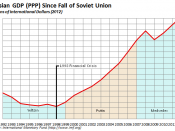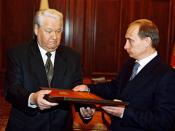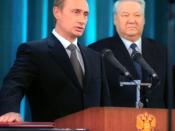Since the collapse of the Soviet Empire, the new Russian Federation has had a tumultuous relationship with capitalism and foreign investment. It is not surprising that twelve years have past since the fall of communism in Russia and still there are structural problems within the Russian political and economic systems. Lack of political-economic precedent and reluctance for radical reform, from a top-heavy government; have inhibited the evolution of Russian society. Although, as the country matures, so does the constitution and standard economic practices.
In my opinion, the role of foreign private corporate investment, in influencing Russian political-economic reforms, has been meager at the best of times. Not until accession into the World Trade Organization will there be a chance for a major role to be played by foreign investors, as this will encourage the legislative and institutional changes needed in confirming Russia's status as a democratic and market economy.
Past Problems with Business Development (1993-1998)
"Russia is moving from metacorruption, that is a system which is corrupt in its very essence, to venal corruption: from a corrupt system to a system with corruption."
(Sakwa 82).
Russia's appearance, in the nineties, resembled a complex society with market potential intertwined with authoritarian corruption. Under the leadership of Boris Yeltsin, Russia managed to establish a premature form of a market economy that has developed the habit of taking two steps forward and one step back. In 1991, Yeltsin outlined his program of economic reform in what Richard Sakwa describes as, "liberalization, stabilization, privatization, and restructuring" (Sakwa 279). In a speech to the RSFSR Congress of People's Deputies, broadcast by TASS on October 28, 1991, Yeltsin summarized his economic policies as a liberalization of prices, privatization of small and middle sized business and land reform, monetary stabilization and tax reform, and restructuring of...


